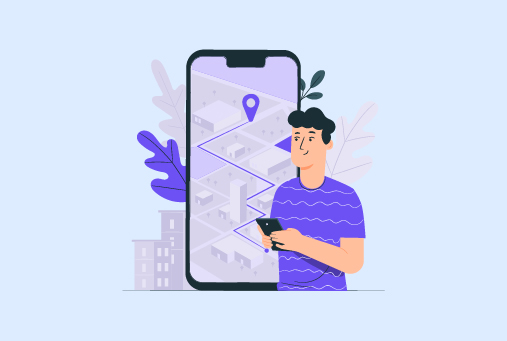
The Power of Software Translation and Localization in Transportation
For the development and growth of a country, it’s crucial to adapt changes in different sectors using technology in transportation to facilitate people in traveling. Also, helps in carrying the products from one place to another. Just like other industries, coming towards technology, this sector of transportation is also improving day by day to modernize with the world and to make it easier for everyone using transport. With the involvement of tech in transport, it is better for the environment‘s security and safety. In transportation, one of the most useful technologies is software translation services and localization. It is useful in changing the language of software according to different countries, so people of that country can easily understand the language with no language barriers.
Software Requirements in the Transportation Sector
Tech in transport will help transport services boost their business worldwide, and help them build connections with the natives in their language, making customers satisfied with the transportation services. Software in transportation will be able to sell tickets online, and it can track the vehicle’s real-time location. And determining the optimal route for the vehicle. Useful when traveling in an unfamiliar country or when transferring products for a company. No matter how much advancement comes in this sector but language barriers persist in for that reason, software translation services are crucial. This can bring a lot of help to people to understand the software and the details completely.
Software Translation and Localization in Transportation
Translation of software within the transportation industry ensures the accuracy of the documents and interfaces of the software in different languages. As per the country where the software is being used. It will bring a major solution and advancement in fleet management and route optimization. Apart from translation, software localization services are vital to the transport sector in that they make it possible for platforms, sites, and applications to be arranged to meet the specific demands of various geographical locations.
Apart from translation of text, localization services require redesigning the program to the regional languages or legal requirements. This process ensures that the public in different marketplaces can easily obtain transport services, ranging from fleet management to GPS tracking, booking platforms, and logistics websites.
Advantages of Software Translation and Localization
As transportation and logistics grow more global and digital, software translation and localization are becoming more and more important. Here are a few main advantages:
Improved Accessibility
By becoming easier for international users to interact with transportation services, local language versions of software interfaces, websites, and mobile applications can increase client retention and satisfaction. Further, by localizing all content, such as symbols, forms, and measurements, local consumer preferences are accommodated, and consumers using software localization services in various regions feel more comfortable, which ultimately avoids confusion.
Effective Communication for Safety
Every user will understand vital safety measures if safety instructions, warnings, and guidelines are translated into local languages. In addition, they can see regional regulations. Companies can prevent legal issues and adhere to these guidelines by implementing localized content.
Effective Operations and Training
Training resources in local languages help staff members of multinational transportation companies better comprehend safety regulations, software usage, and other related topics. Additionally, employees in many nations can use the same systems in their native tongue. Thanks to localized software, which reduces errors, ensures consistency, and expedites task completion.
Improved Customer Service
When transportation and localization services use translators to provide services to people from different countries. They grow quickly in a specific region with their service, customers feel more connected and they feel comfortable using the app which is in their local language. And these customers share their reviwes with others, and so company get more clients.
Competitive Edge and Expanding Market
Making people feel more welcoming towards your application, transportation, and localization companies, use translators in their service applications. So, people can use their service in their local language and can understand it more easily and in detail. This makes businesses understand different cultures and become popular with their service among different regions.
Cost Effective
Making use of tech tools and different software can help companies decide about the routes, and they can track and manage the deliveries. Easy management can save manual working costs. Different tools in local languages can save customers’ time for waiting for the support team to cater to the clients’ queries.
Better Sales and Marketing
Websites, in-app ads, and marketing materials designed for certain markets can boost interaction and conversion rates. Transportation providers can offer pertinent promotions and customized experiences by customizing the user journey according to language and location.
How Has Uber Conquered the World through Translation and Localization?
The major factor that Uber has become a giant in the world of ride-sharing technology is due to using localization and translation technologies efficiently. Which makes it a great success globally. Uber has worked hard to ease customers in terms of providing customer service, messages, and applications in the language they understand. It uses the best tools and technologies, like Computer-Aided Translation (CAT) Tools. By modifying language, currency, time formats, and even measurement units to accommodate regional tastes, the company concentrated on developing translated versions of its software app interface.
Uber has built a multilingual content management system, which is combined with machine translation that is also checked by humans for accuracy, and does not compromise on quality. Uber customizes the app according to the culture of people from different countries.
In addition to helping Uber expand into other markets, this strategy built trust and a more individualized relationship with its user base worldwide.
It is a very impressive example for the people who deal in the transportation business. They can expand and flourish their business if they follow Uber’s strategy of translation and localization in the transportation business.
Wrapping Up
The transportation sector is going through a digital revolution in the globalized world of today. Software tools in the transportation sector are making it easier for companies to work more efficiently, which helps them to cater to clients from all over the world. The major constraint that comes in between while dealing with foreign clients is only the language barriers. Companies deal with it by applying user-friendly software in the app for the ease of others. Once there is no language barrier, clients can relate more with the service providers and, with the help of a translator integrated to the app,these clients can easily share and understand. This is how the transport industry develops quickly in various regions.




